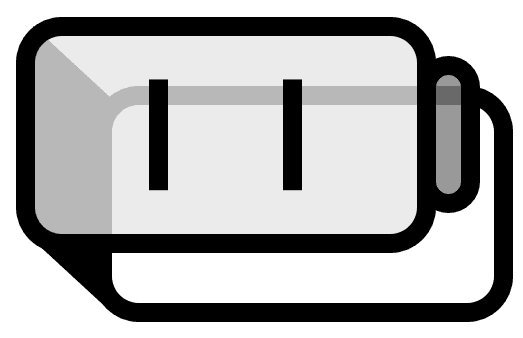Principles of CT (Computed Tomography)
Principle
CT stands for Computerized Tomography, a technology that captures cross-sectional images of the body, similarly well-known as MRI among the public.
Our bodies are composed of various materials such as bones, muscles, and water. CT uses the difference in how these materials absorb X-rays1 to obtain cross-sectional images. Let’s look at the diagram below.
In (a), let’s say the white square represents a material (for example, bones) that absorbs a lot of radiation. The radiation is absorbed by $1$ while passing through this square. The black square represents a material (for example, water, fat) that does not absorb radiation well. The radiation is absorbed by $0$ while passing through this square. Then, the radiation proceeding in each arrow direction in (a) is absorbed by the amount written at the end of the arrow.
Now, look at (b). What needs to be done in CT is to match the numbers inside the squares with the numbers written at the end of the arrows. If it is assumed that each square has the value of $0$ or $1$, it is not too difficult to find out even by manual calculation. However, with a slight change in values, one might realize that the resulted combinations are not unique. Now, let’s see the following examples.
(d) and (e) are different, but the amount of radiation absorbed in each is exactly the same. Thus, with this information alone, we cannot precisely know what we want (the cross-sectional picture of the body). Now, suppose we shoot radiation in another direction.
Since the degree of radiation absorption when shot diagonally in (f) and (e) is different, the two cases can be distinguished. Therefore, to know how much radiation is absorbed by these squares, one must shoot radiation in as many directions as possible to understand how much is absorbed in each.

The more radiation is shot, and the more varied the directions, the more accurately information about the body’s cross-section can be obtained. Therefore, the CT scanning device is shaped like a circle, rotating around to shoot radiation in as many directions as possible and gather information.
Mathematical Theory: Radon Transform
Let’s designate the function that represents the degree of radiation absorption in each part of the body as $f$. Then, the function representing the degree of absorption for each radiation is the Radon Transform $\mathscr{R}f$ of $f$.
Below, the picture on the left is a cross-sectional image of the brain. Designating this as $f$, the actual data obtained in CT $\mathcal{R}f$ is like the picture on the right below.


CT data $\mathcal{R}f$ is restored to the picture we wanted through a process called Radon Inverse Transform.

Radiation, X-rays, and light can all be considered the same. ↩︎
